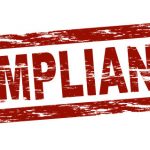Food accounts for one-third of the 42 million products imported into the United States each year, according to Andrew J. Seaborn, supervisory consumer safety officer, division of import operations, ORA, FDA. FSMA’s risk-based FSVP rule places responsibility on importers to ensure their food is safe, yet since the rule was implemented, the most common Form 483a observation has been a failure to develop an FSVP. In fact, from FY 2017 to present, the observation was cited 552 times, outweighing any other observation, said Seaborn at the recent Food Safety Supply Chain Conference, as he shared some of the latest trends in compliance and enforcement related to FSVP.
Thus far, common citations include:
- No written hazard analysis to identify and evaluate known or reasonable foreseeable hazards
- No written procedures that ensure appropriate foreign supplier verification activities are occurring related to imported food
Seaborn noted several additional “significant observations” related to FSVP inspections, including incorrect entry data, and the absence of documentation in the following areas:
- Approval of a foreign supplier
- Evaluating foreign supplier performance, along with related risks
- Establishing written procedures to ensure foreign supplier verification activities are performed
- Review and assessment of another party’s evaluation of foreign supplier performance
- Ensuring food was produced in compliance with low acid canned foods regulations
- Related to meeting the definition of a very small importer, when applicable
| Main Points of FSVP | FSVP Inspections (Completed) |
|
| U.S.-based importers responsible to ensure safety of imported food | FY 2017 | 285 |
| Risk-based (hazards, importers and suppliers) | FY 2018 | 792 |
| Align with PC supply chain provisions | FY 2019 (as of 5/28/19) | 458 (FDA is planning for 880) |
| FDA oversees compliance via importer inspection | ||
| Foreign suppliers can help importers comply | ||






